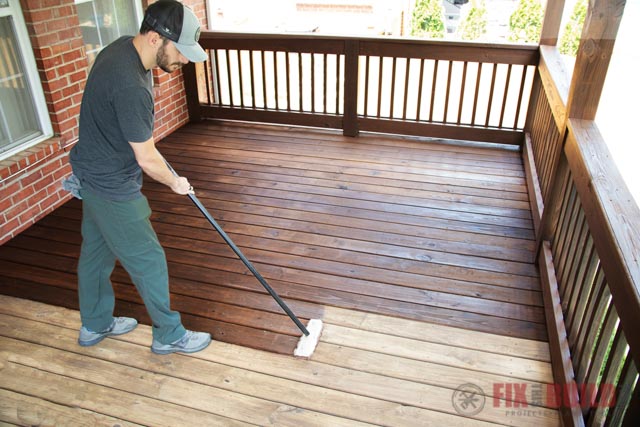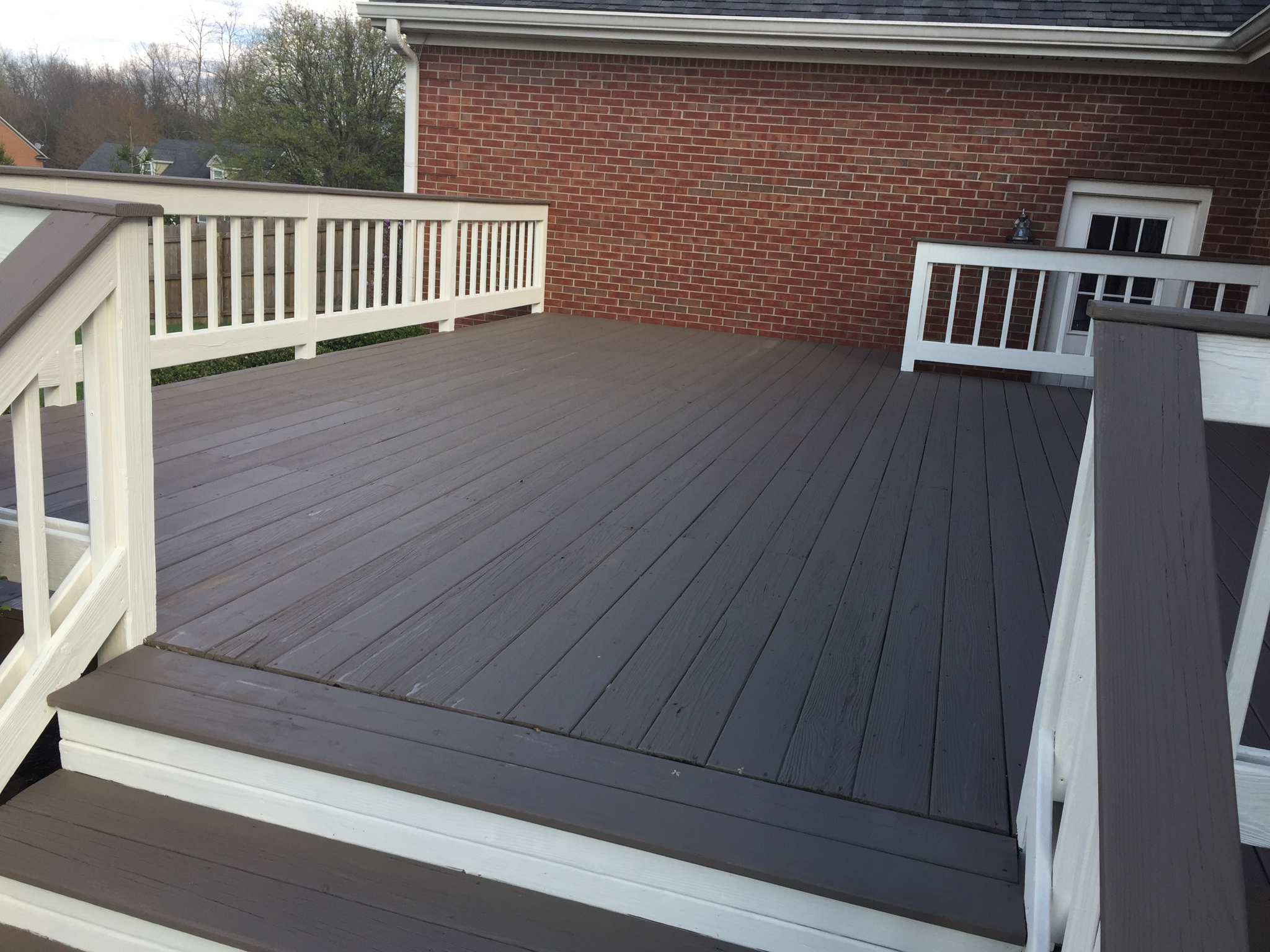Selecting the Right Stain for Your Fencing: Tips and Considerations
When it comes to keeping and enhancing the appearance of your fencing, picking the appropriate stain is vital. We will certainly discover the various kinds of fencing stains, factors to consider before choosing a stain, ideas for preparing your fencing for discoloration, and the differences between water-based and oil-based discolorations. Additionally, we will certainly delve right into selecting the ideal discolor color to match your fence and improve your outdoor room.
Understanding Different Sorts Of Fencing Discolorations

On the other hand, water-based stains are made from acrylic or latex and provide a much more subtle color to the wood. Water-based spots are much easier to cleanse up and have a faster drying out time contrasted to oil-based discolorations.
Picking in between oil-based and water-based spots depends upon different elements, including personal preference, the desired look, and the level of upkeep called for. Oil-based discolorations are advised for surround high-traffic locations or those regularly subjected to extreme weather. fence staining and sealing. Water-based discolorations, on the various other hand, are a prominent choice for fence property areas where appearance and ease of usage are important
When choosing the ideal stain for their fencing,Comprehending the differences in between water-based and oil-based stains aids home owners make a notified choice. Thinking about the particular requirements of the fence, such as its location, direct exposure to sunlight, and desired aesthetic, will make certain that the selected stain provides long-lasting defense and enhances the total charm of the fencing.
Variables to Take Into Consideration Before Picking a Spot

One more element to consider is the kind of wood your fence is made of. Various sorts of wood soak up spots in a different way, leading to varying degrees of color intensity and resilience. Softwoods like ache may require more frequent staining compared to woods like cedar or redwood. In addition, specific woods may be more vulnerable to issues like rot or insect problem, which may impact the choice of tarnish to preserve the fence and shield.
The environment and weather in your location must additionally be taken into consideration. If you live in a location with extreme winters months or high humidity, you might require a tarnish that offers extra protection against moisture and UV rays. Likewise, if your fencing is revealed to guide sunlight for extended periods, a tarnish with UV preventions can help avoid fading and discoloration.
Last but not least, it's vital to consider your wanted visual. Different stains offer various shades and finishes, permitting you to tailor the appearance of your fence (deck staining). Consider the general style and layout of your residential or commercial property, as well advice as any local policies or home owner association standards that might dictate the appropriate discolor shades
Tips for Readying Your Fence for Discoloration
To prepare your fencing for staining, beginning by completely cleaning the surface area using a light detergent and a stress washer or scrub brush. Cleansing the fence is an important action as it eliminates dirt, gunk, and any previous coatings that might disrupt the discoloration process. Begin by moistening the fence with water and after that apply a moderate detergent utilizing a scrub brush or a pressure washing machine with a low-pressure setup. Scrub the surface area gently, paying additional attention to locations with stubborn spots or mold and mildew. Rinse the fencing completely with tidy water to eliminate all traces of cleaning agent.
This step is critical as discoloring a wet or moist surface can lead to inadequate bond and an irregular surface. Guarantee that the fence is entirely dry before continuing with the staining process.
Before discoloration, evaluate the fencing for any kind of damages, such as loose boards or nails. Fix any type of issues to ensure that the fence is structurally audio. Furthermore, consider applying a timber conditioner or brightener to the surface area. This item aids to open the wood pores, enabling the stain to penetrate better and evenly.

Comparing Water-Based and oil-based Discolorations
When choosing a discolor for your fence, it is essential to compare the qualities and benefits of water-based and oil-based spots. Both kinds of spots have their own benefits and factors to consider, so it is essential to recognize the differences in between them.
Oil-based stains are recognized for their longevity and resistance to use and tear. Furthermore, oil-based discolorations tend to last longer than water-based stains, making them a popular option for fences.
On the other hand, water-based stains are a lot more environmentally pleasant and less complicated to clean up. They might not supply the exact same degree of security as oil-based spots, particularly in rough weather conditions.
Ultimately, the selection between oil-based and water-based stains depends upon your certain requirements and preferences. When making your choice, think about elements such as resilience, environmental impact, and ease of application. Consulting with an expert or looking for recommendations from experts can also aid make sure that you pick the ideal stain for your fencing.
Picking the Right Discoloration Color for Your Fence
The option of a proper discolor color for your fence is an essential aspect of boosting its aesthetic appeal and enhancing the overall layout of your outside area (fence staining companies). The right tarnish shade can transform a level, average fence right into a striking prime focus that adds depth and character to your building
When picking a discolor shade for your fencing, it is essential to think about the style and style of your home. Natural tones such as browns and neutrals can develop a cozy and welcoming appearance if you have a traditional or standard style home. On the other hand, if you have a modern or modern home, you may consider selecting vibrant and vivid colors that make a statement.
One more variable to consider is the all-natural environments of your residential or commercial property. If you have a whole lot of plant, a stain color that complements the natural landscape, such as eco-friendlies or deep reds, can develop a natural and unified appearance.
Furthermore, it's worth taking into consideration the upkeep required for various stain shades. Lighter colors often tend to show dust and put on even more easily, while darker colors can hide imperfections and require much less frequent touch-ups.
Inevitably, the option of stain shade for your fencing need to reflect your individual design and preferences - fence cleaning. Make the effort to get in touch with and explore different choices with professionals if needed, to make certain that you pick the perfect tarnish color that enhances the charm and allure of your fence
Verdict
In conclusion, when it comes to selecting the best stain for your fencing, it is important to understand the various kinds of spots offered and consider factors such as toughness and desired appearance. Picking the right discolor shade can boost the general visual appeals of your fence.
We will certainly explore the various types of fencing discolorations, aspects to consider before picking a stain, tips for preparing your fencing for staining, and the distinctions in between oil-based and water-based spots.Setting apart between water-based and oil-based stains is vital when recognizing various types of fencing spots. Water-based stains are less complicated to clean up and have a faster drying time contrasted to oil-based stains. Additionally, oil-based spots often tend to last longer than water-based discolorations, making them a popular option for fencings.
In verdict, when it comes to picking the ideal stain for your fencing, it is crucial to comprehend the different kinds of spots readily available and consider variables such as sturdiness and preferred appearance.